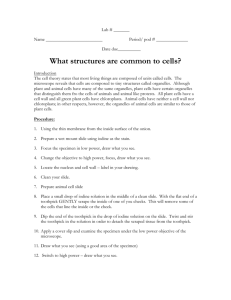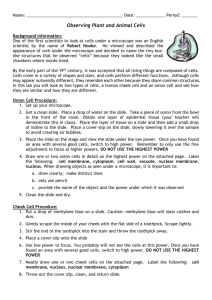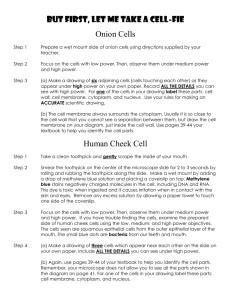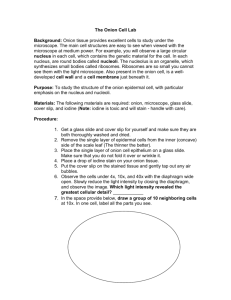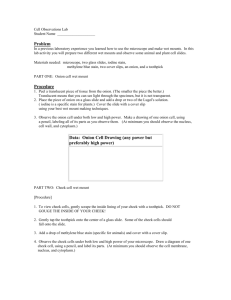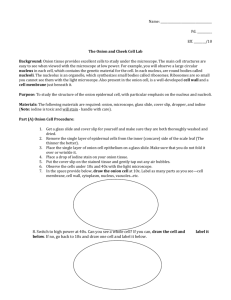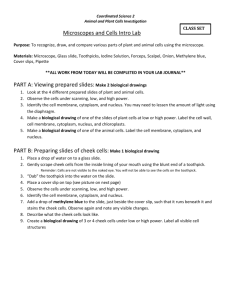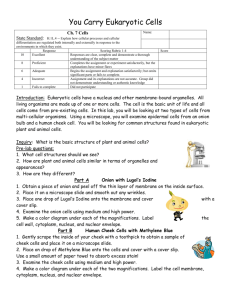Onion and Cheek Cell Lab Report
advertisement
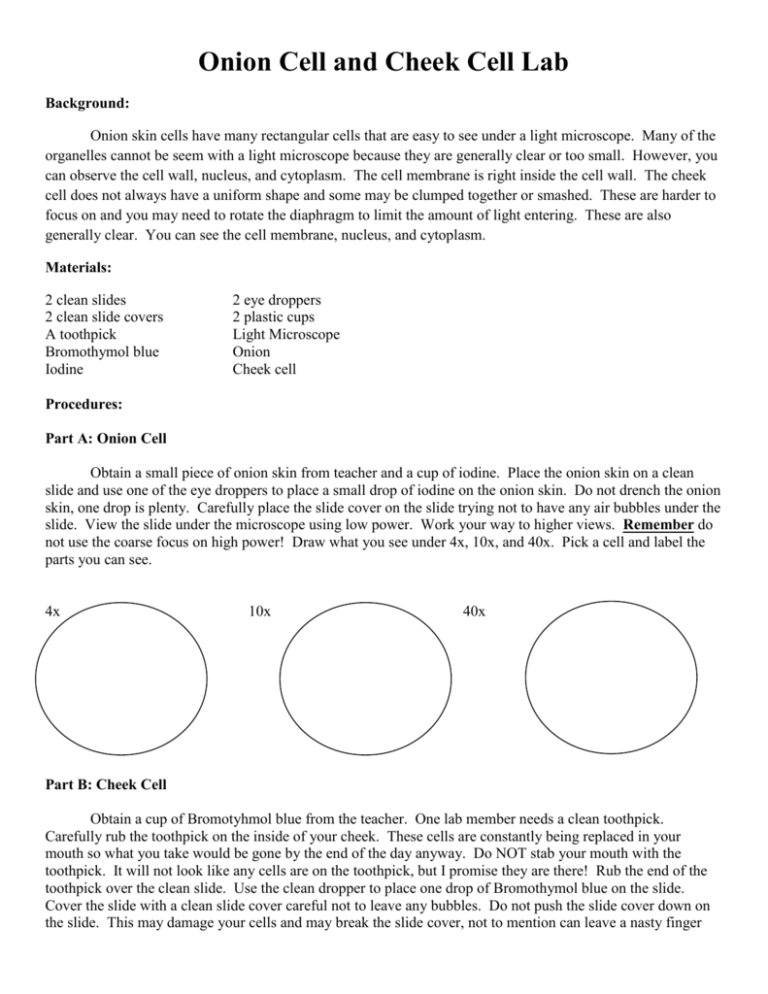
Onion Cell and Cheek Cell Lab Background: Onion skin cells have many rectangular cells that are easy to see under a light microscope. Many of the organelles cannot be seem with a light microscope because they are generally clear or too small. However, you can observe the cell wall, nucleus, and cytoplasm. The cell membrane is right inside the cell wall. The cheek cell does not always have a uniform shape and some may be clumped together or smashed. These are harder to focus on and you may need to rotate the diaphragm to limit the amount of light entering. These are also generally clear. You can see the cell membrane, nucleus, and cytoplasm. Materials: 2 clean slides 2 clean slide covers A toothpick Bromothymol blue Iodine 2 eye droppers 2 plastic cups Light Microscope Onion Cheek cell Procedures: Part A: Onion Cell Obtain a small piece of onion skin from teacher and a cup of iodine. Place the onion skin on a clean slide and use one of the eye droppers to place a small drop of iodine on the onion skin. Do not drench the onion skin, one drop is plenty. Carefully place the slide cover on the slide trying not to have any air bubbles under the slide. View the slide under the microscope using low power. Work your way to higher views. Remember do not use the coarse focus on high power! Draw what you see under 4x, 10x, and 40x. Pick a cell and label the parts you can see. 4x 10x 40x Part B: Cheek Cell Obtain a cup of Bromotyhmol blue from the teacher. One lab member needs a clean toothpick. Carefully rub the toothpick on the inside of your cheek. These cells are constantly being replaced in your mouth so what you take would be gone by the end of the day anyway. Do NOT stab your mouth with the toothpick. It will not look like any cells are on the toothpick, but I promise they are there! Rub the end of the toothpick over the clean slide. Use the clean dropper to place one drop of Bromothymol blue on the slide. Cover the slide with a clean slide cover careful not to leave any bubbles. Do not push the slide cover down on the slide. This may damage your cells and may break the slide cover, not to mention can leave a nasty finger print on the slide preventing you to see well when you look at your slide. Place the slide under the microscope starting on low power. Draw what you see. Then carefully move up to 10x drawing what you see. When you move to 40x make sure you do NOT use the course focus. Only use the fine focus to get a clear view of the cells. Draw what you see and label one of the cells. 4x 10x 40x Questions: 1. What type of cell is the onion cell? How can you tell? 2. What type of cell is the cheek cell? How can you tell? 3. Why do you think the onion cell does not have chloroplasts? 4. Which was the easiest to get a clear view of the cells? Why? 5. Why are the dyes important in this lab? 6. Where the cells you observed prokaryotic or eukaryotic? How can you tell? 7. Parts of the onion cell that were visible Parts of the onion cell that were not visible Parts of the cheek cell that were visible Parts of the cheek cell that were not visible 8.
